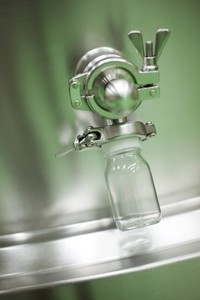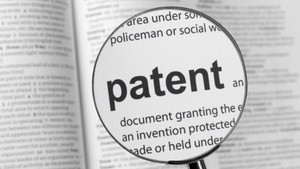US-based biotech giant Amgen explains on its websites the steps involved in manufacturing a biosimilar.
Biosimilars are products designed to act in a similar way to the originator or reference product that has been previously approved for a particular disease. However, biosimilars are not the same as generics, which have simpler chemical structures and are considered to be identical to their reference medicines. Biosimilars are produced by recombinant DNA technology in living organisms as opposed to the chemical synthesis required for generics [1].
Manufacturing of biosimilars is more challenging than the traditional small molecule generics mainly due to biosimilars being larger and more complex molecules. This means that cannot be produced using classical chemical processes, but instead are produced in living cells, with purification being a critical step in the process [2]. This, in turn, means that even minor changes in manufacturing process can cause significant changes in efficacy or immunogenicity [3].
In fact, it has often been said that the ‘the process is the product’ when it comes to biologicals. Therefore, it is not surprising that Amgen says that, when developing monoclonal antibodies, they first perfect this in vitro, then select and scale up the optimal cell lines. This is followed by reproducing these cell lines time and again in large-scale bioreactors, and finally the company checks and re-checks for batch-to-batch consistency. All of this using customized operating procedures.
Amgen manufactures its biologicals using living cells engineered to produce therapeutic proteins in large quantities. Those cells are very sensitive to conditions produced during their synthesis and handling, and a series of culturing and purification steps are required to produce a consistent, quality active ingredient.
All of the complexities of manufacturing originator biologicals also apply to biosimilars. However, Amgen points out that manufacturing biosimilars ‘has its own set of intricacies’.
The first issue is that when manufacturing a biosimilar, only the reference product’s amino acid sequence is known. From there, the biosimilar candidate requires considerable preclinical optimization. Four steps were identified by Amgen for producing a biosimilar:
Cell Line Creation
Gene synthesis of the known amino acid sequence produces expression vectors, which can be used to produce expression cell lines. Clones are then selected and critical quality attributes (CQAs) checked.
Cultivation and Production
A master cell bank is then created from the clones that fall within the acceptable parameter range for the CQAs. From this master cell bank a working cell bank of one vial per batch is produced. Expansion is then carried out and the protein is produced in a bioreactor.
Isolation and Purification
The protein is then recovered via filtration. This is followed by purification using chromatography and a comparison with the reference product. The CQAs are then re-checked to ensure that scale up has had no impact on the parameters.
Formulation, Fill and Finish
The product is then concentrated, and sterile filtration is carried out, followed by filling. A comparison with the reference product is carried out again and CQA similarity is confirmed for each batch.
Amgen has four biosimilars approved in Europe and four in the US. In Europe these include adalimumab biosimilars Amgevita and Solymbic, bevacizumab biosimilar Mvasi and trastuzumab biosimilar Kanjinti [4]. In the US Amgen has gained approval for Amjevita (adalimumab-atto), Avsola (infliximab-axxq), Kanjinti (trastuzumab-anns) and Mvasi (bevacizumab-awwb) [5].
Related articles
Amgen starts phase III trial for aflibercept biosimilar
Amgen to buy out Japanese partner Astellas
References
1. GaBI Online - Generics and Biosimilars Initiative. Biosimilars versus generics [www.gabionline.net]. Mol, Belgium: Pro Pharma Communications International; [cited 2020 May 29]. Available from: www.gabionline.net/Biosimilars/Research/Biosimilars-versus-generics
2. GaBI Online - Generics and Biosimilars Initiative. Why is “the process the product” for biosimilars? [www.gabionline.net]. Mol, Belgium: Pro Pharma Communications International; [cited 2020 May 29]. Available from: www.gabionline.net/Biosimilars/Research/Why-is-the-process-the-product-for-biosimilars
3. GaBI Online - Generics and Biosimilars Initiative. Manufacturing of biosimilars [www.gabionline.net]. Mol, Belgium: Pro Pharma Communications International; [cited 2020 May 29]. Available from: www.gabionline.net/Biosimilars/Research/Manufacturing-of-biosimilars
4. GaBI Online - Generics and Biosimilars Initiative. Biosimilars approved in Europe [www.gabionline.net]. Mol, Belgium: Pro Pharma Communications International; [cited 2020 May 29]. Available from: www.gabionline.net/Biosimilars/General/Biosimilars-approved-in-Europe
5. GaBI Online - Generics and Biosimilars Initiative. Biosimilars approved in the US [www.gabionline.net]. Mol, Belgium: Pro Pharma Communications International; [cited 2020 May 29]. Available from: www.gabionline.net/Biosimilars/General/Biosimilars-approved-in-the-US
Permission granted to reproduce for personal and non-commercial use only. All other reproduction, copy or reprinting of all or part of any ‘Content’ found on this website is strictly prohibited without the prior consent of the publisher. Contact the publisher to obtain permission before redistributing.
Copyright – Unless otherwise stated all contents of this website are © 2020 Pro Pharma Communications International. All Rights Reserved.








 0
0











Post your comment